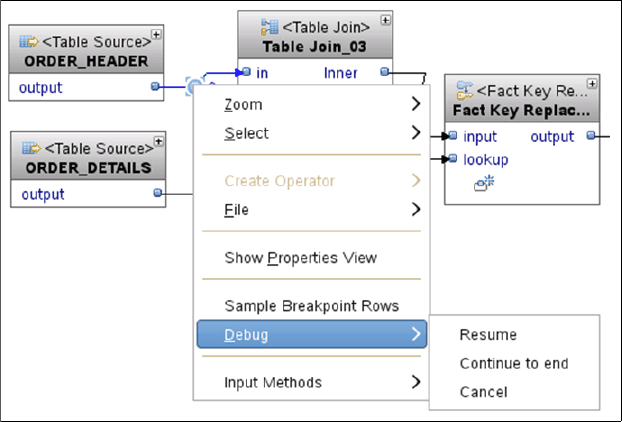
280 Solving Operational Business Intelligence with InfoSphere Warehouse Advanced Edition
Using the debug capability
When debugging your data flow, breakpoints can be set at the object level.
Sample rows and variable state and values can be viewed when the breakpoint
is reached, as shown in Figure 7-5.
Figure 7-5 On breakpoint, options exist to Resume, Continue to end of data flow, or
Cancel
7.3.3 SQW and temporal tables
SQW supports and provides tooling for slowly changing dimensions (SCDs) in
the dimensional modelling sense. When implementing temporal tables as
described in Chapter 5, “Temporal data management and analytics in an
operational warehouse” on page 173, remove any SCD processing in your ETL
engine and use the temporal functionality instead.
For example, to introduce SCD processing to a table, a database designer might
add the columns <EFFECTIVE_START_DATE>, <EFFECTIVE_END_DATE>,
and <IS_CURRENT>. An update to a row in the table using traditional SCD
techniques does the following:
1. Updates the <EFFECTIVE_END_DATE> and <IS_CURRENT> column
values of the existing row.
2. Generates a new row in the table with the new values.
In contrast to Figure 5-4 on page 184, Figure 7-6 on page 281 shows how a
traditional SCD might look. Two rows exist for the same CUSTOMER_ID. The


